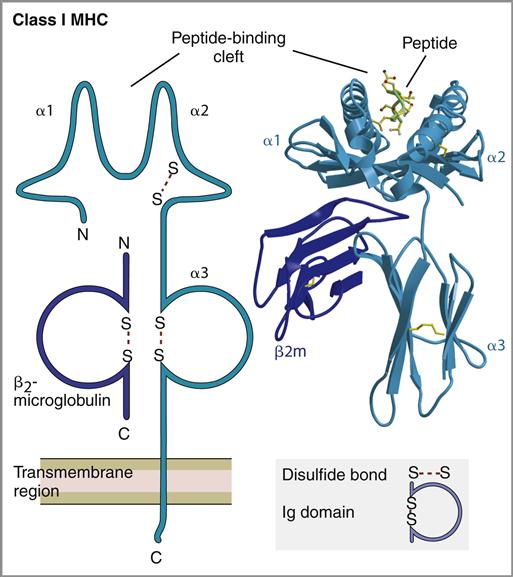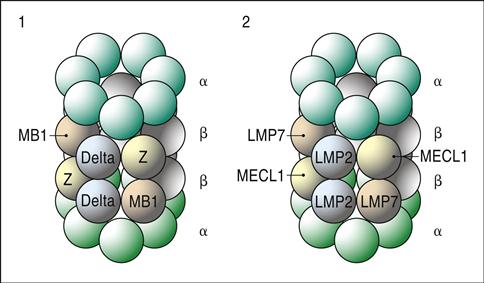Antigen Presentation for Cell-Mediated Response
Learning Objectives
• Draw the structure of a class I antigen-presenting molecule
• Explain antigen processing and presentation to CD8 T cells
• Recognize the role of ubiquitin in antigen processing
• Identify the role of heat shock protein 70 (HSP70) in antigen processing
• Compare and contrast the function of class I and CD1 molecules
Key Terms
Calreticulin
Cell-mediated immunity
CD1
Class I molecules
Class II molecules
Cross-priming
Endogenous antigen
Exogenous antigen
Proteasome
Transporter-associated antigen processing (TAP) protein
Tapasin
Ubiquitination
Introduction
Previous chapters in this text focused on antibody responses initiated by class II molecule antigen presentation to CD4Th2 cells. Although antibodies are efficient in dealing with exogenous antigens or extracellular microbes, they are ineffective in eradicating intracellular microbes, viruses, and tumor cells. A cell-mediated response, which is usually mounted in response to these endogenous antigens, consists of lymphocytes, activated macrophages, and natural killer (NK) cells. The nature of the cellular response is a reflection of antigen presentation. If antigens are presented in the context of class II or CD1 molecules, CD4Th1 cells promote an inflammatory response that involves macrophages, lymphocytes, and fibroblasts. When antigens are presented by class I molecules, cytotoxic T cells are activated. These cells are able to lyse target cells following cell-to-cell contact.
Class I Proteins
Class I molecules are found on all the nucleated cells in the body and present antigen to CD8 T cells. They consist of a single, α-chain transmembrane protein that is stabilized by a second protein known as β2-microglobulin (see Chapter 4).
Because the processed antigens are bound to class I molecules at the ends, the length of the antigen is restricted to 9 to 11 amino acids (Figure 18-1).
Class I Molecules and Antigen Presentation
Endogenous antigens are generally large molecules that must be digested and fragmented before presentation to lymphocytes. Antigens are marked for enzymatic degradation by a process known as ubiquitination. In the process, molecules of ubiquitin are attached to the antigen by covalent bonding between amino groups of ubiquitin and lysine amino acids in the antigen. When four or more ubiquitin molecules bind to the antigen, the complex is shuttled to a series of proteasomes for fragmentation. During transport through the cytoplasm, heat shock protein 70 (HSP70) interacts with the ubiquitinated protein and protects it from enzymatic digestion. Initial digestion takes place in a 20S proteasome. The low-activity 20S proteasome consists of two α-subunits and two β-subunits, each having seven globular protein subsets. Only three β-subunits (MB1, delta, and zeta) are enzymatically active. Antigen fragments produced by the 20S proteasome vary widely in length (Figure 18-2).









